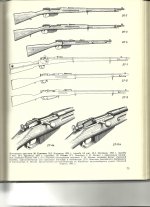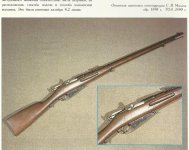I know that the Nagant brothers submitted their design to Imperial Russia and it was never adopted. They did use the magazine in the M91 design and added nagant's name to the rifle as a concession. Ironically, much of what Nagant contributed to the design was later removed or modified when the Soviets updated the design. In Russia it's known as "Vintovka Mosina" and Nagant isn't gtiven any credit. Of course those are the same people that claim to have invented airplanes, rockets, baseball, and the jeep.
I wonder if there is an example of the original Nagant rifle design in a museum soewhere or even a picture or schematic.
I wonder if there is an example of the original Nagant rifle design in a museum soewhere or even a picture or schematic.


